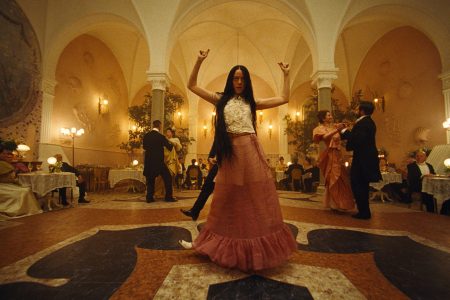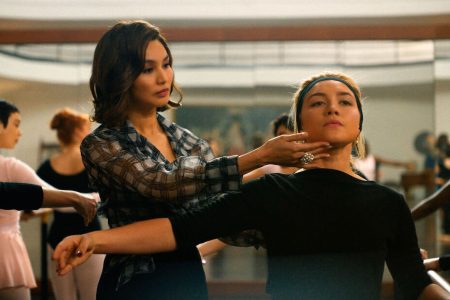There’s more than one life to live within a lifetime, Jacques Audiard’s Emilia Pérez seems to confirm. However, the life you leave behind might haunt you forever. That’s how things go in this queer musical with a political undertone: life decisions made in the singing of a verse, transitions and comebacks in search of redemption. Rita (Zoe Saldaña), an ambitious young lawyer who works against her conscience by defending unrepentant nefarious clients, meets ‘Manitas’ (‘little hands’, Karla Sofía Gascón), the typical rogue and macho drug lord, who secretly wants to undergo gender-affirming surgery and let go of the past. This early plot twist sets the tone for the rest of the movie: no matter what, the past will keep resurfacing, urging characters to face the consequences. Emilia Pérez, in her new identity, wants to reconcile with her former life by setting up an organisation that will help families locate loved ones who had fallen victims to cartel violence. Able to find her true self through her own transformational journey, she nevertheless realises that dignity won’t be restored unless victims are once again connected to their families.
Metaphorically speaking, the above unresolved tension could be the key to access every character of this film: Jessi (Selena Gomez), Manitas’s wife and mother to their children, with her unconfessed passion for another man; Rita, with her life-consuming career despite her wish to change course; Emilia, with her instinctual, parental love for her two children who can still sense their father in her presence, although she pretends to be their distant relative. Despite the inner conflicts, this is supposed to be a film about women’s empowerment and for a moment you might also be convinced that some joyful resolution is possible. Singing and dancing (score and lyrics by Clément Ducol and Camille, choreography by Damien Jalet) are integrated playfully in the plot, though certainly not in the typical Hollywood style with a tune stuck in your head for days after you have seen the movie.
[Note: If the above link doesn’t play in your region, try this one]
Dance scenes in particular are sharp-edged and dense, mainly unfolding as visualisations of Rita’s most secret thoughts – as in the scene of a philanthropic gala, in which Emilia delivers her speech in front of a crowd of corrupt politicians and lucrative businessmen, while Rita sings ‘El mal’ (aka ‘The Evil’) and seems to pull the strings in this undeniably masterful choreographic sequence. In this scene, Rita – both menacing and seductive, spotlit yet somehow invisible – prowls in the hall, climbs on the tables with feline agility, pickpockets one of the attendees and throws away his money before kicking his balls, and effortlessly orchestrates the whole crowd as if she were a professional puppeteer. This sense is accentuated in the refrain of the song by contrapunctual action: the synchronised crowd jump in their seats as if hit by Rita’s furious bolt, their bodies electrified by her gestures and words, which now reveal the truth behind their sinful deeds. Rita’s petite size (some might remember her also as the outspoken ballerina Eva Rodriguez in the early millennium film Center Stage) is nonetheless overflowing with a kind of vocal delivery and rebellious angst, as if her dancing and singing were a valve to let all her anger out. Such expressive gesticulation is made even more dramatic as the camera switches to the person she points at, or follows her in the careful selection of her ‘prey’. In her blood-red suit, Rita is fearless, voicing the truth in this theatre of public lies.








